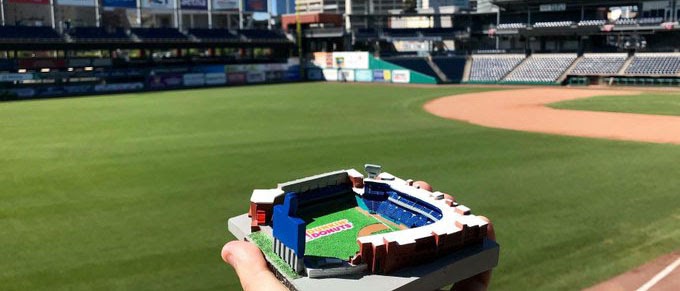For many, being a professional athlete seems like a dream job. For those who have reached the peak of their respective sport, it almost certainly is.
But for the 89% of professional baseball players who don’t reach the pinnacle of the sport, it is far from a dream job.
While fans take in and enjoy the 162-game regular season that the Major League Baseball puts on every season, the majority of minor league players fail to be paid even close to what their major league counterparts earn. Even the lowest paid major leaguers made $563,000 in 2020, according to 2003-21 data from the MLB.
The only minor league baseball team in Connecticut, the Hartford Yard Goats, has provided connections to housing and other amenities for their players for years — which could be a model for player housing built by MLB around the country.
“We’ve got a really good setup here in Hartford. We are really in a fortunate situation with what the city has provided us and one of those things being what we believe is the best minor league stadium in all of baseball,” said Jeff Dooley, spokesperson and play-by-play broadcaster for the Yard Goats. “The facilities here are truly amazing and being able to take care of our guys and being able to provide them with whatever they need is something the whole organization takes pride in.”
Quint Studer, owner of the Pensacola Blue Wahoos, said half of his two affiliate teams live with host families to help cover costs that would usually be covered by minimum weekly salaries, leaving no room for spending outside of rent.
Furthermore, U.S. Census data marks the national poverty line at $12,490 in 2019.
When comparing that to the average salary of a minor leaguer, 86% of minor leaguers are below the poverty line. That statistic points out that of the roughly 7,000 minor league players that are under contract for all 30 MLB teams, around 6,000 of them are bringing in less than what is considered the poverty line during the spring and summer, the only months they receive salary.
“I was lucky enough to be a part of the Astros when they decided to pay for furnished apartments for all our minor league teams, so I never had to worry or stress about paying out of pocket for housing,” said Luis Guerrero, a member of the Houston Astros farm system. “Many of my friends throughout the minors have told me about their unfortunate experiences when it comes to housing, whether it was having to fit 4-5 [people] in a room and not having enough money to even buy groceries for themselves.”
Before the 2021 MLB season began, national headlines gripped on to the stories of members of the Oakland Athletics farm system showing substandard food they were provided from their organizations.
While these stories were not the case for every organization, the ones that made their way to the public eye were concerning and forced the MLB to make changes that would benefit the large number of minor league athletes.
In mid-September, all 30 major league teams unanimously voted to start building the framework towards changes that benefited Minor League Baseball. Progress was made quickly and the announcement regarding housing minor leaguers came during the Championship Series.
Not all specifications have been announced, but requiring housing is a major first step in helping solve the issue of professional athletes falling below the poverty line.

